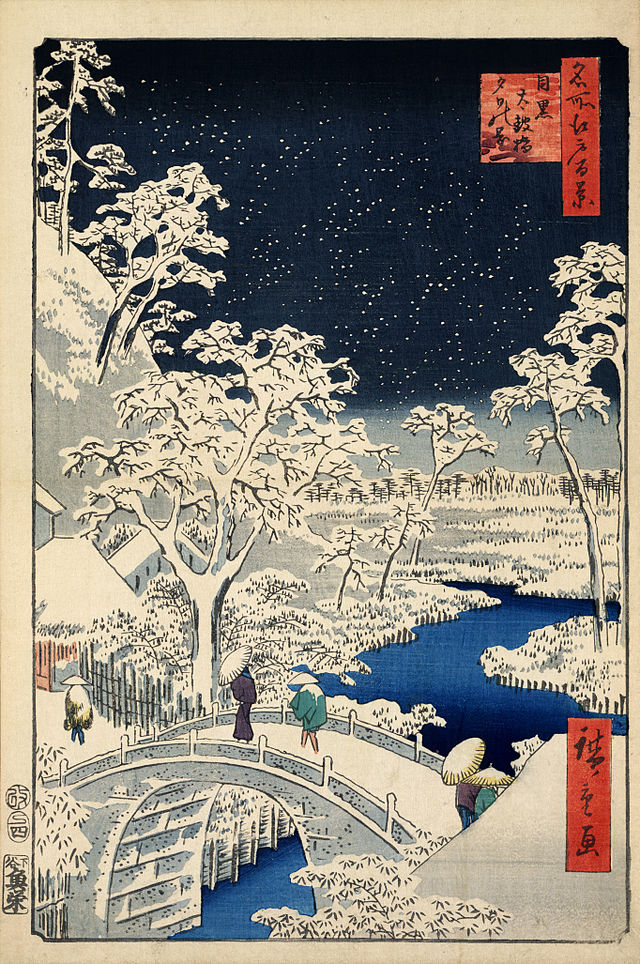news

January 2025
It’s winter in the Northern Hemisphere. Most people love the season’s beauty. Some even like its sub-zero temperatures. The season inspires painters, poets, photographers and storytellers of all kinds to try and describe its challenging mixture of beauty and danger.
One of the most effective ways of capturing the essence of winter is through writing beautifully simple haiku.
Haiku is a three line Japanese verse form with 5 syllables in the first line, 7 syllables in the second line and 5 syllables in the third line, making a total of 17 syllables.
In case you don’t remember, syllables are the separate parts of the sounds of a word. “Snow” is a 1 syllable word. “Frosty” is a 2 syllable word. “Icicle” is a 3 syllable word. The two words “nighttime snowfall” together have 4 syllables.
Looking at images of winter can be an enjoyable and effective way to get started writing a haiku, or any other poem. Have a look at this example of a winter themed haiku based on an 1857 woodblock print by Japanese artist Utagawa Hiroshige.

Snow covered drum bridge
Beneath cold indigo sky
Ice feet grip your back
© Carol Walshe 2025
For a selection of copyright free images by Japanese artists that could inspire your haiku, click on this link from the Library of Congress:
Free to Use and Reuse: Japanese Fine Prints
Winter Sonnets
If you want to take a longer look at winter, try writing a winter sonnet. Sonnets provide a means of pushing your ability to explore ideas within a prescribed form. The lesson linked in the button below includes information about sonnets and how to write them, with explanations of rhyme scheme and iambic pentameter.